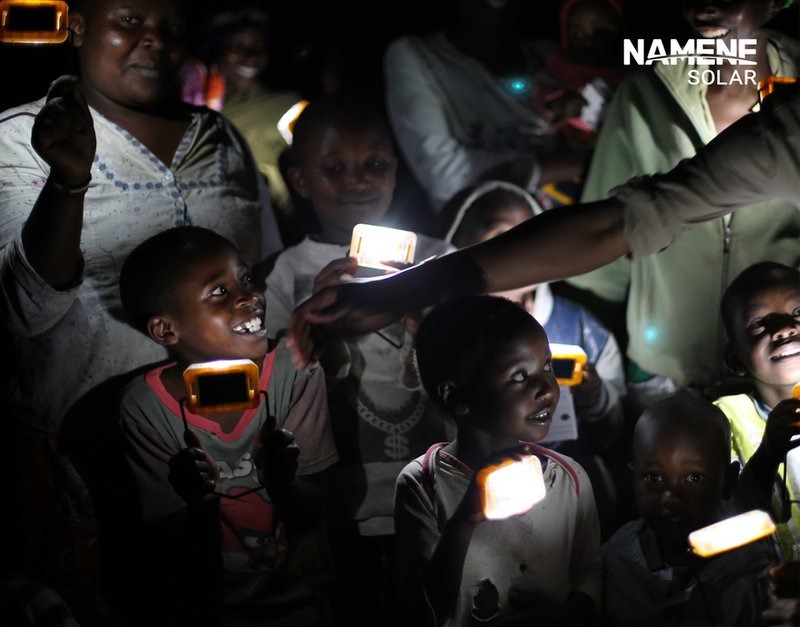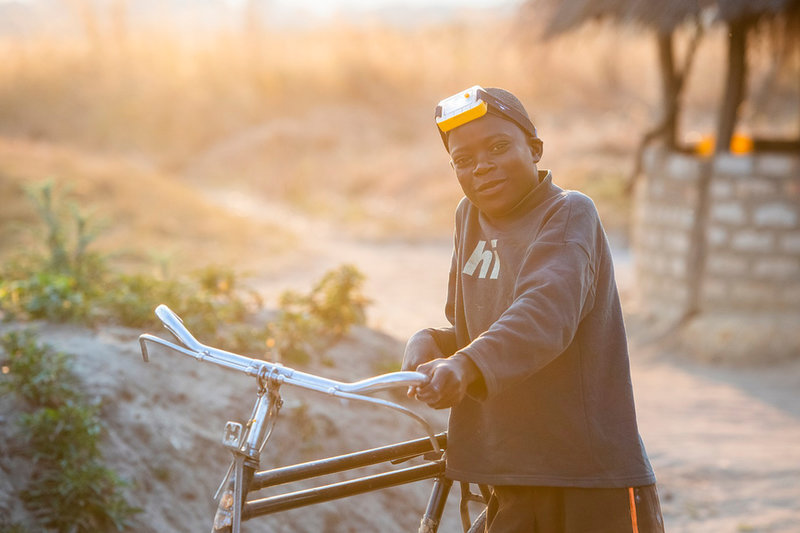Q&A | REGIONAL FOCUS
Lighting up Namibia
More than one million households in Namibia currently don't have access to stable electricity. London-headquartered firm Namene Solar is working to revolutionise their lives by providing clean energy lights via carbon financing. Yoana Cholteeva speaks with Bernardo Lazo, managing director at Namene Solar, about the project and how it fits into the broader state of Namibian energy.
W
ith only a little more than 50% of Namibian households having access to the electrical grid, the rest normally rely on kerosene lamps, candles, and torches to light their homes, which cause a number of concerns.
These lighting methods have proven costly over the years, as fuels have to be imported into the country. As well as posing risks and providing a poor quality of light, they contribute to both indoor air pollution and climate change.
For this reason, Namene Solar has created a programme aimed at distributing up to 650,000 lights in rural and peri-urban areas in the country.
This project is the first one to be awarded a Gold Standard in Namibia, a best practice standard for climate and sustainable development interventions, in a significant milestone for Namene Solar.
In addition to providing light, the ambitious programme is aiming to gradually develop higher capacity and establish partnerships with local companies to distribute lights on a monthly basis, boost employment, and improve Namibians’ quality of life.
Yoana Cholteeva: Could you tell me a bit more about Namene Solar’s latest carbon offsetting project in Namibia, certified as gold standard?
Bernardo Lazo: Our project aims to displace fossil fuels by introducing large-scale, first-time access to solar lights. These are portable multifunctional lights that can be used at a desk, they can be hung on the wall, or can be used as a head torch.
The reason why we are certifying the project under the Gold Standard is to be able to monetise the emission reductions that the project achieves by displacing fossil fuels. This leads to emission reductions, which are quantified, monitored, reported and certified by the Gold Standard.
That enables us to be able to sell carbon credits in the voluntary market, which means companies that want to compensate their emissions can buy the carbon credits from us, from the reductions that are achieved by the programme.
In order to achieve large volumes of emission reductions, we need to distribute a very large number of solar lights as part of this programme.
With the sale of the carbon credits, we aim to sell the lights at a subsidised price. That means we target to distribute them at a price that any household can afford; even if they live on under $1 or $2 a day, they would be able to buy one or two lights per household.
One of the main challenges of access to solar energy sometimes is not that the technology doesn't exist but it's the affordability barrier. Some of these households don't have access to credit and they are not able to buy with cash at a regular price.
So, we're breaking this barrier and enabling large scale penetration by aggregating the demand and the sale of the solar lights through schools, community centres, and health clinics.
We also develop awareness campaigns through these aggregation points and distribute a large number of lights in all villages and districts that we visit. We achieved certification late last year and that means that now we are able to distribute the lights and earn the carbon credits for the lights we distribute.

What challenges do you encounter on the way to making this project possible?
I guess one thing affecting the sector, or most sectors right now, is the Covid-19 pandemic, simply because it has been more challenging to travel, visit the project, and the communities.
We have been relying more on local partners and setting up our team locally, establishing a subsidiary of our company, and working with people that might already have the infrastructure and skills to get access to the communities that we want to distribute to.
Namibia is a very sparsely populated country so the area to cover is quite vast. But the population is concentrated in the north of the country and around the capital city, so those will be the two areas where we're going to be focusing our main distribution efforts.
There is also a very large proportion of the population that lives in informal settlements around the capital city that don't have access to electricity and frequently experience fires due to burning candles overnight or kerosene lamps.
That's something we did a long process of stakeholder engagement on; we interviewed health clinics, the fire brigade, as well as schools, to understand the challenges, the risks of the current situation, and how these lights could change that.
Another challenge we face is the ability to aggregate people for the distribution as there might be limitations to how many people can attend a sales event so to speak, especially if we do it around schools or health clinics. So, we might need to do it in either a slower fashion or in a more organised way, to ensure that we don't spread the virus and we follow all the country’s regulations.
Another thing is going to be recruitment and training to manage the distribution, as we need to ensure that we can recruit talent at the scale and speed that the project requires.
We're focusing on one product line to be distributed and focusing on those that will benefit the base of the pyramid – small and affordable lights. This is simply because it's more cost effective to distribute them and they can be sold on a cash basis.
Could you tell me a bit more about the climate finance that subsidises the sale of the company’s solar lights across the country?
The way the voluntary carbon market works is that once a project is certified and has achieved those emission reductions, another company can request to issue carbon credits at that point. Those carbon credits are monetised; that means that we obtain the value of the current credits after the lights have been produced, distributed, and used by the customers.
So, it's a result-based finance mechanism; it doesn't solve the financing gap of having to invest initially in the production, certification, and distribution of the lights.
We will start a gradual growth of lights distribution, starting with smaller volumes to test which methods and which partners work better, and then scale up. We will begin with potentially 100,000 or 150,000 lights, distributed at the end of this year, then likely 300,000 or even 400,000 lights the second year, and up to 650,000 lights in the third year.
So, the majority of the carbon credit volume that the project will generate is going to be from year three onwards. Initially it’s a five-year credit period, which can be renewed for another five, so the overall length of the project is 10 years. It’s a long-term commitment, so it's not without its operational and regulatory risks.
With the purchase of a light, people can be saving annually. And the idea is that, at a later stage, those households can afford a larger system that’s able to charge a radio or a mobile phone, or multiple devices.
Therefore, they can gradually grow their access to electricity for a solar home system and that in turn can become a source of income, either by charging the phone of the neighbour or by connecting a small electrical appliance for work. That's where we want to create this virtuous circle while also generating local jobs.

What’s next for the company after the Namibian solar project?
We provide the full service of financing, development, and operation of solar installations,which would also complement the more productive sector on the grid as Namibia has amazing solar resources.
It simply needs to scale up the penetration of solar throughout the country. We want to use this project also as an example in the region and expand to other countries. We're already working on developing a multi-country programme that will cover Zambia and the neighbouring countries.
Our near future looks very much into expanding and testing this model, we will need to adapt it to different country contexts. To leverage the opportunity of using the climate financing sources we can maybe partner with donor countries, other international institutions, and development banks.
We are working to introduce a technology that is readily available and what's missing is the affordability and the ability to reach that segment of the market that has been left out so far.
Main image: Bernardo Lazo, managing director at Namene Solar. Image Credit: Namene Solar